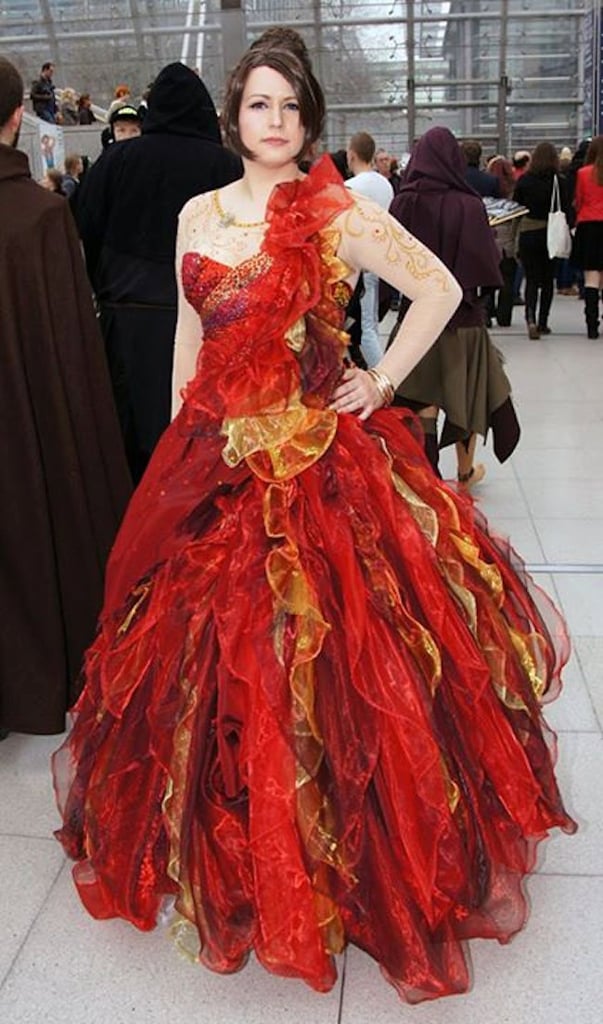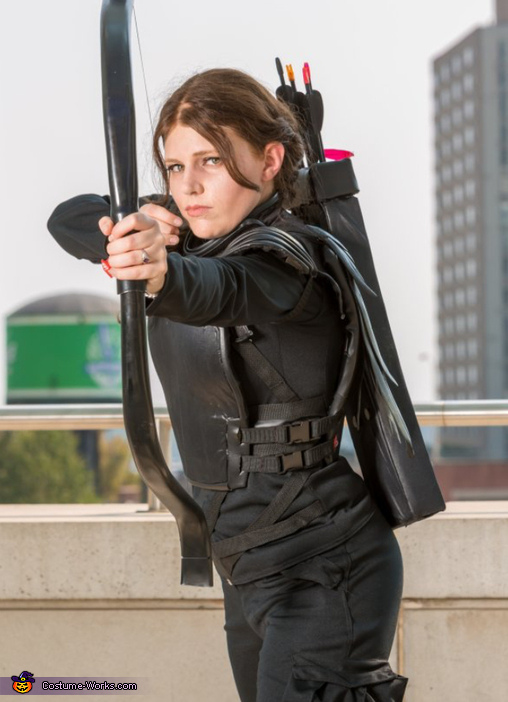The wardrobe of Katniss Everdeen, the protagonist of Suzanne Collins’ “The Hunger Games” trilogy, serves as a powerful narrative device that reflects her journey from the impoverished District 12 to the opulent Capitol. This article explores the significance of her clothing choices, the symbolism behind her outfits, and how her wardrobe evolves throughout the series, ultimately serving to highlight themes of identity, rebellion, and survival.
The Role of Wardrobe in Storytelling
In literature and film, clothing often transcends mere aesthetics; it becomes a representation of identity, status, and transformation. In “The Hunger Games,” Katniss’s wardrobe reflects her socio-economic status, personal growth, and the broader political landscape of Panem. The stark contrast between the drab, utilitarian clothing of District 12 and the extravagant fashion of the Capitol underscores the division between the districts and the Capitol’s elite.
1. The Functionality of District 12 Attire

In District 12, clothing is primarily functional, designed for survival in a harsh environment. Katniss’s wardrobe here includes:
- Work Clothes: Simple, rugged outfits made of durable materials for hunting and mining.
- Hunting Gear: Practical attire that allows freedom of movement, essential for her role as a provider for her family.
- Layering: Due to the cold climate, Katniss often layers her clothing for warmth, reinforcing her connection to the harsh realities of her life.
This utilitarian wardrobe not only reflects her socioeconomic status but also her pragmatic approach to life, emphasizing her role as the family’s protector.
2. Transitioning to the Capitol
As Katniss is thrust into the limelight of the Hunger Games, her wardrobe begins to change dramatically. The Capitol’s fashion is characterized by excess, flamboyance, and a disconnect from reality.
- Stylist Influence: Cinna, her stylist, plays a crucial role in transforming Katniss’s image. His designs prioritize symbolism over functionality, aiming to make a statement.
- Opening Ceremony Dress: Katniss’s dress, which ignites into flames, showcases her as the “Girl on Fire.” This moment marks her transition from a district girl to a symbol of rebellion.
- Costume Symbolism: Each outfit she wears in the Capitol serves a purpose, often reflecting her emotional state or the political messages she must convey.
The Symbolism of Clothing Choices
Clothing in “The Hunger Games” is steeped in symbolism. Katniss’s outfits carry messages that resonate with the audience, turning her into a visual representation of the struggle against oppression.
3. The “Girl on Fire” as a Revolutionary Icon

Katniss’s moniker, “The Girl on Fire,” is not merely a catchy phrase; it encapsulates her fiery spirit and resistance against the Capitol’s tyranny. The dress designed by Cinna for the opening ceremony plays a pivotal role in establishing her identity as a revolutionary icon.
- Fire as a Symbol: Fire represents both destruction and rebirth, mirroring Katniss’s journey from a mere survivalist to a symbol of hope for the districts.
- Media Manipulation: The Capitol uses fashion as a tool for propaganda, but Katniss flips this narrative by embracing the symbolism of fire to inspire others.
4. The Mockingjay: A Symbol of Defiance

As the series progresses, the Mockingjay pin becomes a recurring motif in Katniss’s wardrobe, signifying her connection to rebellion and individuality.
- Mockingjay Pin: Originally given to her by Madge Undersee, the pin becomes a talisman of resistance, further solidifying her status as the face of the rebellion.
- Iconic Outfits: In later books, her outfits often incorporate the Mockingjay symbol, reinforcing her role as a leader in the fight against the Capitol.
Fashion as a Reflection of Identity
Katniss’s wardrobe evolves alongside her character development. Each outfit she wears marks a shift in her identity, revealing her internal struggles and growth.
5. From Reluctant Hero to Empowered Leader
Throughout the trilogy, Katniss transitions from a reluctant participant in the Hunger Games to a symbol of hope and leadership in the rebellion.
- Initial Outfits: Her early outfits reflect her reluctance and necessity, often practical and unadorned.
- Empowerment through Fashion: As Katniss embraces her role as the Mockingjay, her outfits become more elaborate and symbolic, reflecting her acceptance of her leadership position.
6. The Intersection of Fashion and Politics

The Capitol’s obsession with fashion highlights the stark contrast between the superficiality of its citizens and the harsh realities faced by those in the districts. Katniss learns to navigate this world, using fashion as a tool for both propaganda and personal expression.
- Capitol Culture: The Capitol’s inhabitants view fashion as a status symbol, showcasing wealth and power, which Katniss initially resents.
- Strategic Fashion: Katniss learns to use the Capitol’s love of spectacle to her advantage, creating a powerful image that resonates with the districts.
Case Study: The Impact of Katniss’s Wardrobe on the Audience

The impact of Katniss Everdeen’s wardrobe extends beyond the narrative; it has influenced fashion trends and sparked discussions around the symbolism of clothing in media. The success of the film adaptations brought this aspect of her character to a broader audience, leading to:
- Fashion Statements: The “Girl on Fire” dress and other outfits inspired numerous fashion collections and Halloween costumes, reflecting the cultural impact of her wardrobe.
- Discussion on Representation: Katniss’s evolution through her wardrobe has opened discussions about how clothing can represent identity and defiance in oppressive systems.
Conclusion: The Power of Wardrobe in Shaping Identity

Katniss Everdeen’s wardrobe serves as a profound narrative tool that encapsulates her journey from the struggles of District 12 to the complexities of the Capitol. Her clothing choices reflect themes of survival, identity, and rebellion, illustrating how fashion can be both a personal expression and a political statement.
As readers and viewers engage with Katniss’s story, they witness not only her growth as a character but also the power of fashion to convey deeper messages about society, individuality, and resistance against oppression. In the end, Katniss’s wardrobe is not merely a collection of outfits; it is a visual representation of her evolution into a symbol of hope and defiance, resonating with audiences around the world and proving that clothing can tell a story far beyond its fabric.